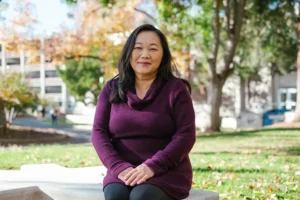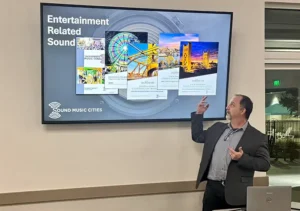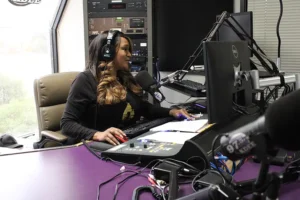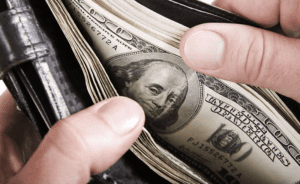The Red Museum has taken on many identities over the decades — a bustling warehouse, a community hub, a volunteer-driven epicenter for experimental art. Vibrating at its own frequency on the outskirts of Sacramento’s Mansion Flats neighborhood, the venue has hosted everything from underground music shows and avant-garde performances to large-scale festivals that spill into the adjacent 1810 Gallery art studios.
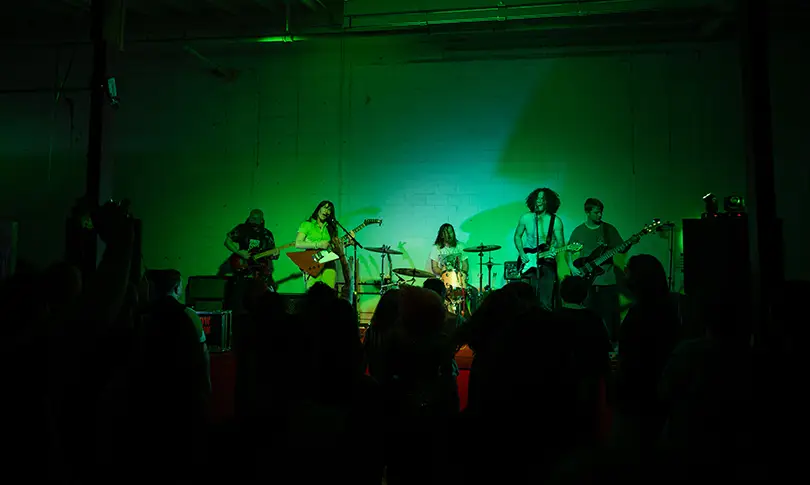
What began in 2015 as a scrappy DIY space with 10 volunteers scrounging up rent money, quickly grew into a cultural anchor for the city’s creative scene drawing in musicians, dancers, filmmakers and neighbors alike.
Now, as The Red Museum celebrates 10 years of radical creativity, the group behind it isn’t just looking back on a decade of sound and spectacle — they’re reflecting the spirit of Sacramento itself: collaborative, offbeat, resourceful and fiercely community-driven. Here are 10 things that make The Red Museum so uniquely Sacramento.
A fruitful beginning
Jennifer Jackson first stumbled across the warehouse online in 2015, and what began as a random find quickly felt meant to be.
“Everything in that beginning was so serendipitous because I literally found Red Museum on Craigslist. It wasn’t like through a network or anything. It just looked and felt so good, and the owner was so chill,” Jackson says. “It was almost like the stories unfolded, and all the connections after that. So it just had this raw magic to it. It’s such a special spot. You could feel it.”
Shaping the old warehouse into its current form meant rolling up sleeves alongside a dedicated group of volunteers who pitched in their creativity and hustle to bring the vision to life.
“In the loft upstairs, there was a whole bunch of shelving … one of the members took all that shelving and basically threw it into the main space down below — and that’s how our first stage was built. We did a lot of recycling and repurposing of existing things from that space,” recalls co-founder Brett Loper.
The venue also sits in a neighborhood steeped in Sacramento music history. In the ’80s, local promoter Jerry Perry, along with partner Scott Syphax, ran venues Vortex and Vortograph at 15th and C streets, where bands like Violent Femmes played. Today, The Red Museum carries that DIY spirit forward, drawing inspiration from regional art spaces such as the former Witch Room and Cozmic Café, while cultivating its own kaleidoscopic identity.
“One thing that makes The Red Museum feel special to Sacramento is that there are few other places that you can come that aren’t entirely prescriptive. So you’re not exactly sure what to expect,” says organizer and lead curator Caitlin Siegel. “It sparks this curiosity, a little bit of mystery. … It’s this special thing when you get to see what we’re doing, and mostly, it’s the people who are involved, either as a band or as an artist, that create these events that only exist at that one point in time.”
The couple behind the curtain
Co-founders Jackson and Loper sparked the vision for The Red Museum — and though they now live in Los Angeles and have handed the keys to curator and organizer Siegel, their influence lingers.
![The Red Museum] was so organic. It's such a testament to ‘If you build it, they will come](https://newtimesmagazine.com/wp-content/uploads/2025/09/SolvingSac_RedMuseum_02.webp)
Jackson’s background in the art world includes membership in the M5arts Collective, a nonprofit that organized temporary art events in Sacramento. She was involved with ArtHotel and ArtStreet, which hosted free exhibitions, musical performances and artist receptions for the community. She also co-owns Grigio Art, an art consulting business that places local work into health care office buildings throughout California.
Loper is a design assistant at Grigio Art and a musician in the band Captcha, alongside fellow Red Museum organizer Styles Munson.
“[The Red Museum] was so organic. It’s such a testament to ‘If you build it, they will come.’ It just had a magnetism from the beginning,” Jackson says. “And truly, the majority of our friendships and our network have really come from planting that little flag right there and being like, ‘We’re opening the doors. Let’s see what happens.’”
A volunteer backbone
From its earliest days, The Red Museum has been fueled by a small, dedicated group of volunteers. Through her work with ArtHotel, a 2016 multimedia exhibition in the former Jade Apartments featuring nearly 100 artists, Jackson met Drew Walker, a local musician who would become a key volunteer and sound engineer for the venue.
Nine additional early collaborators also helped bring the warehouse to life with skills ranging from woodworking and photography to music and event production. Organizers like Siegel and, more recently, Munson, have carried the space forward, shaping its creative identity.
“One thing that I always love is when a person comes for their very first show, and the lights go off, and the band is performing and they get captured in the transformation of this warehouse and the gathering of community that occurs,” Siegel says. “Just seeing that moment of recognition for someone for the very first time is always really lovely, because it’s such pure surprise and a little bit of excitement that feels almost childlike.”
The chandelier that’s seen it all
A chandelier rescued from Craigslist — along with a quirky cone light from Davis — has illuminated a decade of unforgettable nights. After all, what’s a DIY venue without a little secondhand magic? One of The Red Museum’s most eye-catching features is a grand chandelier hanging from an old railing system once used to move large crates across the warehouse.
Jackson and Loper still laugh about hauling the sparkling centerpiece down Highway 50 in the back of a friend’s open-top Jeep just in time to install it before a show. Eighty bucks well spent. Today, it moves throughout the venue depending on the vibe of the night, casting otherworldly shadows when the lights hit it just right.
Another treasured art piece is a massive lamp made from six orange traffic cones, a relic from the beloved former Third Space Art Collective in Davis. Together, these glowing artifacts tell the story of a community that’s always found beauty in the unexpected.
“As soon as you enter the space from the entrance, it’s on the right-hand side. It’s six traffic cones repurposed into a light,” Loper says. “We loved Third Space, that was like a very big inspiration for us. And so, we took that and installed it and it feels like it’s found its right home.”
An ‘X-Files’ deep cut
The Red Museum name was inspired by a classic “X-Files” episode — Season 2, Episode 10, titled “Red Museum,” to be exact — a nod to the co-founders’ love for the strange and unusual. Jackson and Loper, who are now married, first met on the grid in 2014, and after work, the doting couple would unwind by following agents Fox Mulder and Dana Scully as they investigated high-strangeness, a nightly ritual that would eventually influence how the eclectic venue on 15th and C streets was imagined.
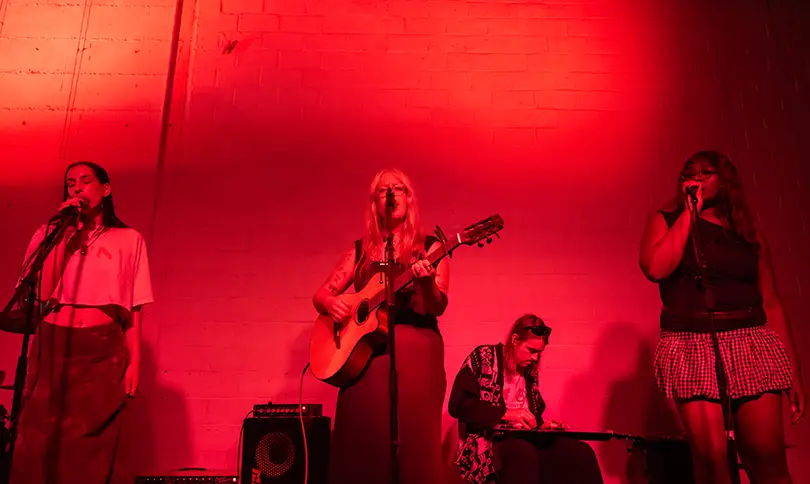
“So we watched it, and basically, Mulder and Scully infiltrate this vegetarian cult. And we’re like, ‘God, Red Museum’s such a cool term, we should call that something someday,’” Loper says. “And then, the first night we all got together and talked about the idealism of the space, and how so many of us were vegetarian, it just felt like the right thing to represent that space.”
That one time …
From raucous parties to unexpected surprises, The Red Museum has collected an archive of wild stories along the way. One of the first — and most memorable — happened during their very first Red Ex showcase on Aug. 26, 2017, which featured Ganglians, Drug Apts, No Age, Young Aundee with Dusty Brown and more.
Jackson recalls the thrill and excitement of seeing such a huge lineup come together, but the pressure of it all was also very real. And of course, what could go wrong, did.
“That event was always so stressful. It’s fun, you’re like on a high, but it’s also like, ‘Oh my God, what’s gonna go wrong?’ And what went wrong, was that the power fuse flipped,” Jackson says. “In the middle of the set, all the lights, all the sound, everything [cut out] and everybody’s just like staring at the stage. But [Ganglians] kind of kept playing through it while we figured it out. … I just remember running around being like, ‘How can I fix this? Oh my God!’ That just felt very scrappy. Drew figured it out.”
Church benches gone rogue
Four historic pews have been part of The Red Museum since its earliest days, carrying a legacy of Sacramento music history. Originally from The Hangar next door — a former recording studio that hosted an estimated 10,000 artists, including Deftones, Kanye West and Cake — the pews now line the homegrown venue, setting the stage for late-night shows, exhibitions and the countless stories that have unfolded within its walls.
In The Red Museum’s early days, while Jackson, Loper and their volunteer crew were still building out the space, a TBD Fest co-founder threw an after-party inside the empty Hangar building. After the event, Jackson was offered the pews that were destined for the trash.
“We just got word that there were these pews that were gonna get thrown away, and so we were let into The Hangar, and we just carried them over,” Siegel says. “I don’t know where they originally came from, but they were just sitting there and they’ve been part of The Red Museum story ever since.”
Unexpected collaborations
Contemporary ballet meets experimental grit at The Red Museum during the annual Behind the Barre event organized by Capital Dance Project, where disciplined dancers, live music and a makers market collide in a space that thrives on creativity and unexpected collaborations.

“I love that event because ballet is so disciplined, and they want to be in that loose energy of The Red Museum … It’s so inspiring. Those dancers work so hard — physically and organizationally. They have a whole legion of volunteers who help them, and they have such a strong vision. Just seeing them put their audience into that environment is really incredible,” Jackson says. “It speaks to the whole ideology we have about wanting to push things into new molds and arenas.”
The stage for Sacramento sound
From local favorites like Rainbow City Park and The Snares to national acts like L.A. Witch and La Luz, The Red Museum has been a magnet for Sacramento’s evolving music scene.
“It really was always very important for us to not just be like, ‘Oh, this is where you go see a punk show.’ We want it to be like: This is where you don’t know what you’re going to see, and you’re going to see things that you didn’t expect,” Jackson says.
Early shows quickly proved the space could draw a crowd. “G. Green, the old garage band and Screecher and Drug Apts were all playing a show, and that was the first one where it was like, ‘Oh, this might be a legit space,’ because I remember just legions of people coming on their bikes, and there was a line out the door,” Loper recalls.
The venue’s mix of emerging and established artists reflects its DIY spirit. “It’s amazing how many artists that you think are maybe ‘too big’ but they still hold such a strong candle for the DIY art scene,” Siegel says.
The Red Museum’s anchor events like the annual Sac Halloween Show in the spring continue to merge scenes and generations.
“It was always really important for us to continue linking people, linking scenes and having multidisciplinary events and experiences because it forges friendships. It makes you think about your art differently. It makes you think about the role you have in your community differently,” Jackson adds.
The next 10 years
After a decade of bending the rules, The Red Museum founders are stepping into a new phase. With the help of their community, Jackson and Loper transformed the venue into a vibrant den for a mosaic of artistic performances. Though they’ve now moved to Los Angeles to focus on their roles in the art consulting business, the story doesn’t end there.
With Siegel orchestrating the magic, supported by Munson, The Red Museum is already conjuring its next act. Siegel, who has been involved from the beginning, not only took over stewardship of the space from an organizational and administrative standpoint, but also shares a deep friendship with Jackson and Loper that has shaped the venue.
“They’re also my very best friends, and we lived next door to each other for seven years. So we have a very tight relationship and we have lived a very sitcom life, to be honest,” she says. “[The Red Museum] ballooned into something bigger than we had really intended it to become. For a moment there, we thought maybe this is a great time just to allow it to have a resolution. But then, I kind of dug my heels in. I have the confidence to take it over. And then, Styles came on board. So that was essential, because it’s definitely not a one-man show.”
As Siegel continues to guide the colorful experiments of the space, Jackson envisions it thriving for years to come.
“The Red Museum is perfectly sized, scaled — the frequency — everything is exactly at an optimal tuning to survive,” Jackson says. “I would just hope that it continues as it’s been — and I think Cait and Styles are the perfect people to do that. The Red Museum is a proof of concept. You can do it. Like, we didn’t know anything. A path for that is getting a really good network and making it fun so people want to do it with you.”
This story is part of the Solving Sacramento journalism collaborative. This story was funded by the City of Sacramento’s Arts and Creative Economy Journalism Grant to Solving Sacramento. Following our journalism code of ethics, the city had no editorial influence over this story. Our partners include California Groundbreakers, Capital Public Radio, Hmong Daily News, Outword, Russian America Media, Sacramento Business Journal, Sacramento News & Review and Sacramento Observer. Sign up for our “Sac Art Pulse” newsletter here.
By Steph Rodriguez

